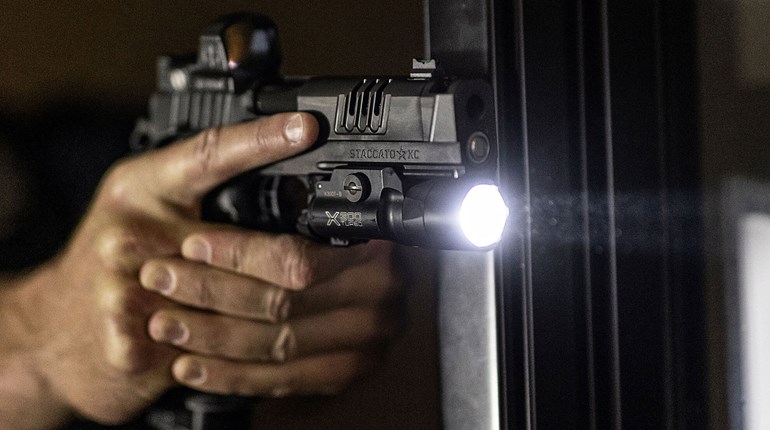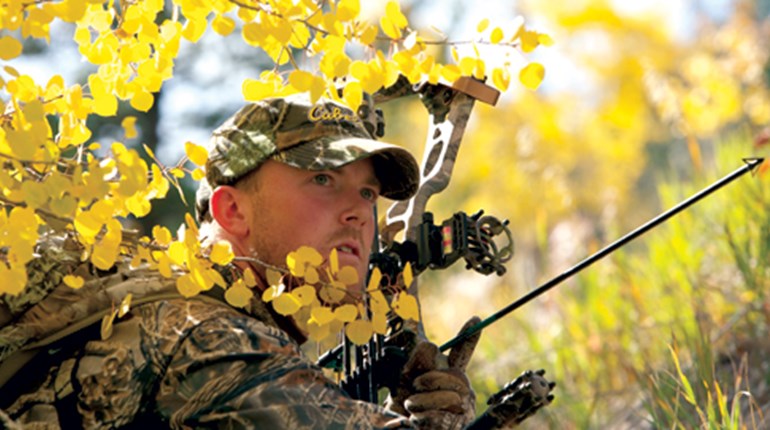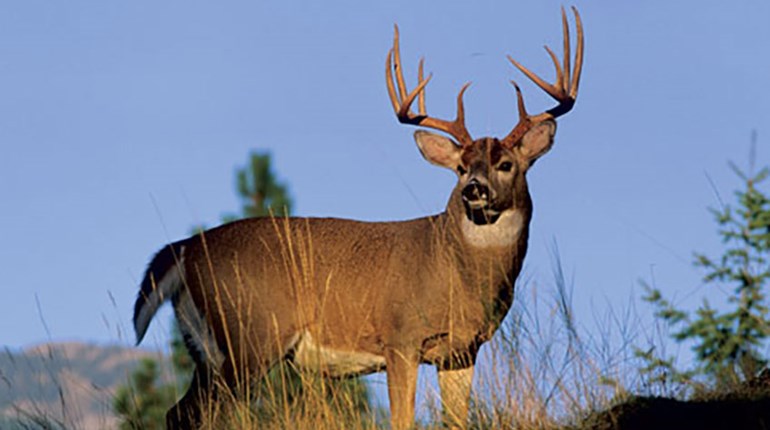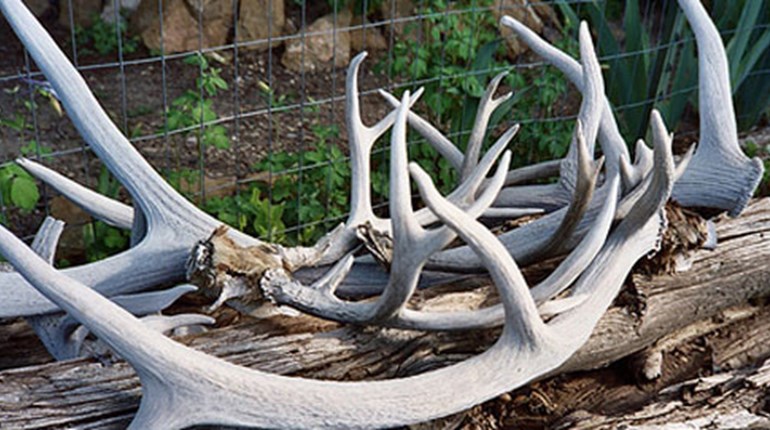
It’s true that many hunters prefer to hunt whitetails from a treestand, and getting up above a deer’s line of sight offers a number of advantages. That said, if you’re afraid of heights or aren’t physically capable of climbing into a way-up-there stand, you can still have a ton of success.
First, if it’s a simple fear of heights, you might try an elevated shooting house. Being fully enclosed can give you the benefits of getting off the ground—much greater visibility being the big one—without forcing you to look down at the ground far beneath your feet.
If that’s not an option, you have a few choices. Spot-and-stalk and still-hunting can be very effective in the right terrain, with spot-and-stalk being more common in wide-open spaces (like out West) and still-hunting being a classic technique practiced in tighter terrain like the North Woods. Spot-and-stalk is just what it sounds like: You drive or hike around or sit down and search the terrain with your optics, until you find a deer that looks worth pursing. Once you’ve spotted him, you stalk him down and try to get into a position to shoot him.
Still-hunting is more like a really, really, really slow walk in the woods. You’ll take a couple of slow, soft, deliberate steps, then be still for a while, scanning around you for the slightest peek of antler, ear, or tail flick. This requires extraordinary patience (and a light rain or some snow helps) but can be very effective.
Most hunters who don’t want to climb a tree will opt for a ground blind, and these can be great. They don’t offer the height advantage of a treestand, but they have several of their own key features that make up for it.
Ground Blind Pros
If it’s raining, you’ll stay dry in a ground blind. They also help to contain your scent, which is of particular importance if you’re bowhunting.
They also offer great cover, which allows you to get away with a little more movement than you could pull off in an open treestand. If you’ve got a fidgety kid with you, this is a huge help.
Blinds can go anywhere you can successfully hide them—no need to find just the right tree. They’re also easy to move, but be careful, as deer don’t take kindly to a giant dark blob showing up suddenly on the edge of their favorite field. Deer need time to get used to a blind, so don’t move it and then hunt in it right away if you can possibly avoid it.
Ground Blind Considerations
You’ll be in the deer’s line of sight, which is a major con. You have to make sure your blind is well camouflaged or hidden in brush, and as mentioned, set it out a week or more before you plan to hunt out of it to give the deer time to adjust.
Because you’re at ground level, wind can be more of a factor, so hunt smart and don’t try to hunt a spot if the wind isn’t right for it.
You won’t be able to see as far as you could out of an elevated treestand, so set your blind carefully in a location where visibility works in your favor.
It’s very tempting to open all the windows so you can see 360 degrees, but don’t do this. It lets light in the blind and you’ll basically be spotlighted to any deer who glance your way. Pick the direction you expect the deer to show up at and open those windows, keeping the rest closed. And don’t peek! Also keep in mind that those window frames are probably not sturdy enough to support the weight of your gun like the rails on a treestand would be. Pack shooting sticks or be prepared to use your knee for support.
You should always follow the rules of safe gun handling, but when hunting from a ground blind, the second part of the rule “be sure of your target and what’s beyond it” is even more important than usual, because your shot will be on a flat plane—not angled into the dirt the way it would be if you were shooting down at a deer from an elevated stand.















































